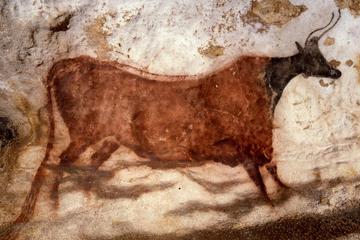Lascaux Caves II (Grotte de Lascaux II)
TIME : 2016/2/22 10:56:27

Lascaux Caves II (Grotte de Lascaux II)
The most famous and best-preserved cave paintings in the world are found at Lascaux in the Vézère Valley, Périgord, southwest France. Discovered deep underground in 1940, they had been sealed away from the world since the Paleolithic Age some 19,000 years ago and include free-flowing images of cows, bears, unicorns, bison, horses, mammoths and human figures depicted in deep shades of brown, red and black in seven different subterranean halls. Now UNESCO World Heritage listed, these spectacular paintings were sealed off from the public in 1963 as they were slowly deteriorating thanks to exposure to temperature change and the carbon dioxide breathed out by visitors.
However, it was decided to recreate the Lascaux paintings in a cave system nearby. After 11 years and 20 artists working on the project, Lascaux II finally opened in 1974 with many of the original 600 paintings finely recreated in two galleries: the Great Hall of the Bulls (Salle des Taureaux) and the Axial Gallery (Diverticule Axial). To this day, no-one knows the original purpose of the Lascaux cave drawings, but theories suggest that they may have had religious significance to early man rather than being domestic dwellings, as no Stone Age tools or evidence of fire were ever found at the site.
Practical Info
Lieu-dit Lascaux, Montignac. Caves open: Feb–Mar, Nov–Dec Mon–Sat 10am–12pm, 2pm–5pm; Mar–Jun, Sept–Oct daily 9.30am–6pm; Jul–Aug daily 9am–7pm. Admission adults €9.10, children aged five–12 €6.50; under five free. From Apr 4 through to Sept 13, tickets can only be bought from an office next to the tourist information center in Montignac village; it is open 9.30am–6pm (Jul–Aug 9am–7pm). For the rest of the year (Mar, Oct–Dec), tickets are available at the cave entrance.
